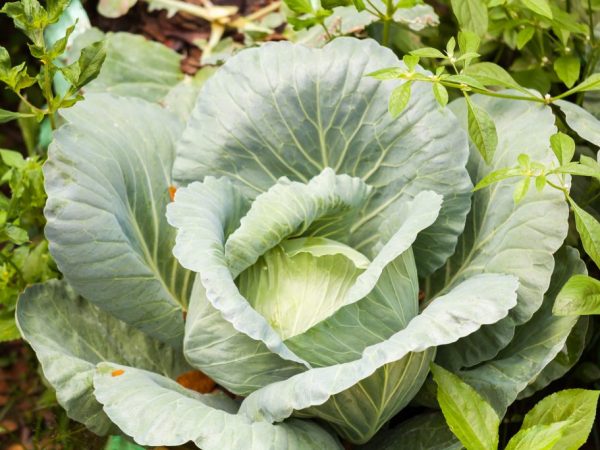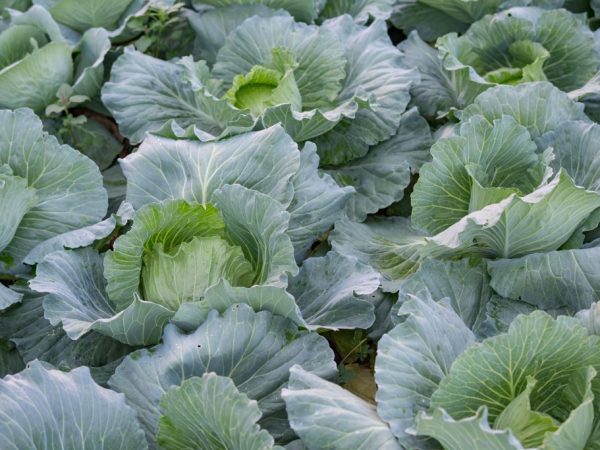Characteristics of cabbage variety Atria f1
White cabbage Atria is unpretentious in care. The plant is appreciated for its delicious fruits and high yield.

Characteristics of cabbage variety Atria f1
Characteristics of the variety
Cabbage Atria f1 is a late hybrid. From the moment of planting to technical maturity, 115-120 days pass. Due to its excellent resistance to changing weather and climatic conditions, the hybrid can be grown in different regions. Cabbage is intended for industrial cultivation, but it can also be cultivated on small farms.
Description of the advantages of the variety Atria F1:
- excellent marketable yield - 100-110 tons per hectare;
- resistance to fungal infections, especially blackleg and gray rot;
- no risk of fruit cracking during long-term storage;
- ease of care;
- possibility of transportation;
- preservation of a presentation for more than a month.
If you store Atria f1 cabbage in a room with a low air temperature and a high level of humidity (in a pantry, cellar), the cabbage can lie until summer. Another advantageous characteristic of a vegetable crop is that during storage the fruits become more juicy.
Description of the head
According to the description, the heads of Atria f1 are light green or white, half open and leveled. The shape is spherical. The average weight of 1 head of cabbage is 3-5 kg, but in the southern regions it can reach 8-10 kg.
The taste of the heads of cabbage is very juicy and sweet. The meatiness is strong.
Description of leaf rosette of Atria cabbage:
- medium size;
- compact;
- raised.
Leaves are concave, broadly oval, obovate. The color is dark gray. Blistering of Atria f1 leaves is weak, sometimes completely absent.
The internal structure of the head is from thin veins to medium in thickness and length. Covering leaves are dark green, with a slight bloom.
The leaf blade is even, without wavy edges. The wax bloom is strong, but this does not affect the taste of the heads of cabbage. The average leaf vein is concave, light green.
The fruits of the variety are excellent for processing. Thanks to the voluminous head of cabbage, cabbage is often used for stewing, boiling, pickling, pickling. The vegetable is added to:
- vegetable stews;
- cabbage rolls;
- soups;
- borscht;
- cold salads;
- chimchu;
- chamchu;
- shawarma.
Growing

The variety is suitable for any climate
There are 2 ways to grow Cabbage Atria f1: seedling and non-seedling. The seedling method is relevant when growing vegetables in the southern regions. Sowing seeds in the ground is an excellent solution for all other climatic zones, including Siberia. The optimal disembarkation time is late March or early April.
Seeds
After purchase, the seeds are checked for quality and germination. In the first case, they are placed in water for 5-7 minutes. Those that go down are suitable for sowing. The grains on the surface of the water are empty - they cannot be used for growing.
For germination, the seeds are placed in damp gauze for 5-6 days. Every day, the fabric is watered so that it does not dry out. For planting, only germinated seeds are taken.
For the Atria f1 variety, a soil consisting of a mixture of turf, peat and loamy soil is suitable.Washed sand is also added.
Before planting, the seeds and soil are treated with a manganese solution. Take 200 ml of potassium permanganate per 10 liters of water. The ground is simply watered abundantly with a solution, and the seeds are placed in the mixture for 15-20 minutes, after which they are washed and dried.
If planting is carried out by seedling, the sprouts require hardening. To do this, they are taken out into the street, where the air temperature is from 15 ° C to 18 ° C. Initially, the sprouts are left for 2-3 hours, and then returned to a warm room. The duration of being on the street is gradually increased. The purpose of hardening is to avoid stress on the plant during the transplanting period.
Planting scheme - 60 x 60 cm.The distance between the seeds is 3 cm, the planting depth is 2-4 cm.The distance between the rows is 40-50 cm.
Care
The care for cabbage of the Atria variety is traditional. It consists of the following procedures:
- watering;
- loosening the soil;
- top dressing;
- mulching.
Watering
Atria cabbage is moisture-loving. The first watering is carried out immediately after transplanting seedlings or planting seeds. During this period, the vegetable crop is watered for 3 days in a row. To do this, use a watering can. In the future, watering is carried out 2-3 times a week. The optimal time is early morning or evening, after sunset.
Small sprouts are poured with 500 ml of water. At least 1 liter of water is added under one head of cabbage. Use only warm, settled water. The ideal temperature is 18 ° C.
Loosening the soil

Plants must be loosened
This procedure is needed to improve air exchange. Enriches the soil with oxygen, thereby stimulating plant growth.
An ordinary hoe is used for loosening. Near the roots, they loosen carefully so as not to harm the culture.
Loosening is carried out after 3-5 hours or a day after watering, because a soil crust forms on the ground, which must be destroyed.
Top dressing
Top dressing is needed to enrich the soil with mineral components and vitamins. When caring for Atria cabbage, organic and mineral pods are used.
Fertilization sequence:
- When planting seeds or transplanting seedlings.
- 20-25 days after planting. Take 1 g of potassium chloride, 2 g of ammonium nitrate, 4 g of superphosphate. All components are mixed in 10 liters of water, applied at the root.
- 10-12 days after the second feeding. In 1 liter of water, 5 g of ammonium nitrate is diluted, let it brew for 2-3 hours, after which it is immediately introduced under the root or by means of drip irrigation.
- From 1-10 days of June. You will need 0.5 liters of liquid mullein, which is bred in 1 bucket of water. Another option - 10 g of ammonium nitrate is mixed with 10 liters of water. This is a foliar dressing.
- At the beginning of August. The first option - 40 g of sulfuric potassium is diluted in 1 bucket of water. The second - 0.5 liters of ash infusion is mixed with 10 liters of water.
An excellent time to get ready is cloudy weather before the rain. Fertilizing in dry weather during the day is impossible: fertilizers will burn the root system. The last dressing is applied 20 days before harvest.
Mulching
Mulching is necessary to retain moisture in the soil, which is important for the growth of vegetable crops. It also helps the plant not to freeze in severe frosts, which is especially important for Siberia.
Straw, rotted grass, mulch paper, branches of fruit trees are used as mulch. You cannot take fresh grass, because harmful insects can start in it.
Pests and diseases
Atria f1 hybrid cabbage variety is resistant to fungal diseases, but bacterial and viral infections can attack it:
- Mucous bacteriosis. Formed as a result of exceeding the temperature in the room where the seedlings are grown, or excessive watering. Initially, the leaves rot, after - the stumps.
- Vascular bacteriosis. Occurs after heavy rains. At first, the leaves turn yellow, then they darken and, as a result, fall off.
- Mosaic. Appears after aphids. At first, the leaf plate turns white, then the leaves stop growing and wrinkle.
Fungicides help to cope with diseases. Especially effective are 0.1% solution "Binoram", means "Fitolavin-300", 0.1% means "Phytobacteriomycin".The consumption rate of the first is 200 ml per bucket of water, the second is 10-20 ml per 10 liters of water, the third is 100 ml per 1 bucket of water.
As a preventive measure, they adhere to the basic care procedures. It is also important to observe the conditions for growing seedlings.
Conclusion
Cabbage variety Atria F1 is excellent for growing in all regions. The plant loves abundant watering, is resistant to fungal infections, and has a high yield. The fruits are consumed fresh or processed.


